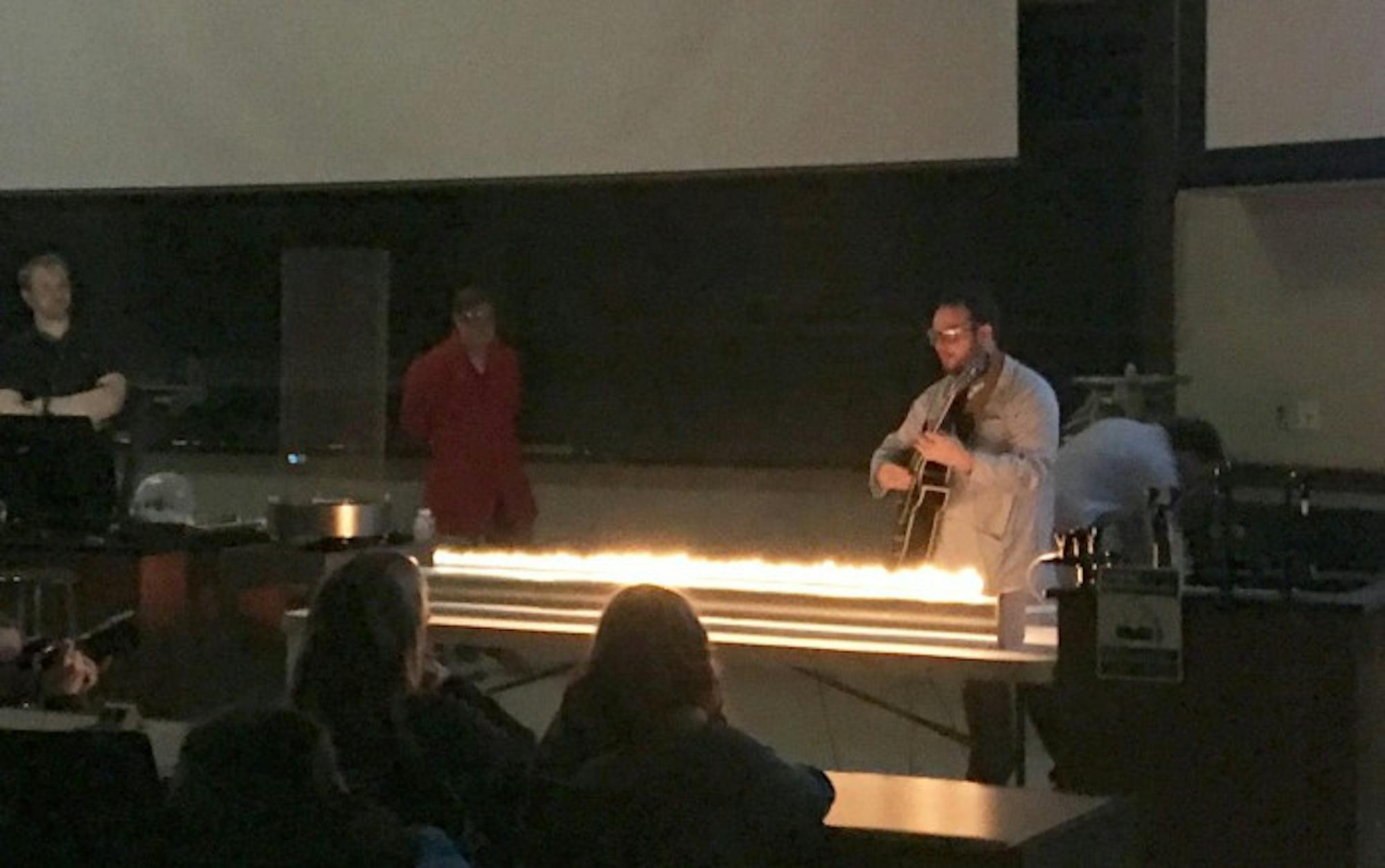
Throughout the academic year, Notre Dame’s physics department has brought science to the public with a series of events titled “Our Universe Revealed.”
The ExPAND demo team, made up of physics graduate students Adam Clark, Austin Nelson, Craig Reingold and Allan Leishman, presented the next installment in this series, “A Show of Fire and Ice,” on Tuesday evening in Jordan Hall of Science.
Clark kicked off the event by starting a massive fire with a few simple ingredients.
“[I used] just non-dairy coffee creamer,” he said. “So by spreading it out, it increased the amount of oxygen gas that was available to be burned and we got the spectacular flame. You might have seen this before … the people that do pyrotechnics for [action] movies use principles like this to get that large, satisfying fireball.”
The next demonstration of fire was conducted by Nelson, who created what he called a “fire tornado.”
“What we do is put this cage on and what that does is swirl the air for us, it gives the air particles spin — what we like to call angular momentum,” he said. “So the air is swirling around inside and the fire has nowhere to go but in and up.”
This tornado was the highlight for three children attending the event — Ramon, Thomas and Eleanor Veselik.
“[I loved] when they turned the fire green,” Ramon Veselik said.
Their mother, Anne Veselik, said the event provided a great learning opportunity.
“Science is alway fascinating and it’s cool to get to see it hands-on and things you can’t do at home,” she said.
After the fire tornado, Reingold did some further tests with a Ruben tube and a guitar.
“What I have here is a long tube filled with propane … there are tiny holes cut in the top,” he said. “However, I have a speaker and play sound waves through [the tube], I can actually visualize the sound wave … as I make the notes lower, the wavelength gets longer — the big pockets of flame move further apart and as the notes get higher, the wavelength will get shorter.”
After these experiments with fire, the team moved on to experimenting with ice, particularly with liquid nitrogen — Nelson’s “favorite thing to play with.”
“Liquid nitrogen is a lot colder than ice … so we’re going to dip stuff inside of it, because we’re scientists and that’s all science is — dipping stuff in liquid nitrogen,” Reingold said.
The demo team proceeded to drop a rose, tennis ball, racquetball, ping pong ball and balloon into the liquid nitrogen.
The balloon yielded a particularly interesting result, Nelson said.
“What’s happening is that we’re taking all the air inside the balloon and making it very, very cold so it condenses in on itself and if we allow the air to heat up the balloon will re-inflate,” he said. “So if you ever want to have a party and have a lot of balloons, you can save them by just freezing them in liquid nitrogen.”
Leishman finished off the event with a demonstration of superconductors, using the magnetic properties of superconductors to levitate a small rock.
“A superconductor is — short story — is a material that can conduct electricity without any watts,” he said. “The problem is that, like how ice has to be frozen below 32 degrees to be solid, superconductors have to be really cold to be superconducting … luckily we have material on this stage that can do that. Liquid nitrogen can get down to negative 321 degrees Fahrenheit and so it’ll take us below that threshold.”
The next installment of “Our Universe Revealed” will be held May 16 in Jordan Hall and will be a hands-on exploration of particle physics.













